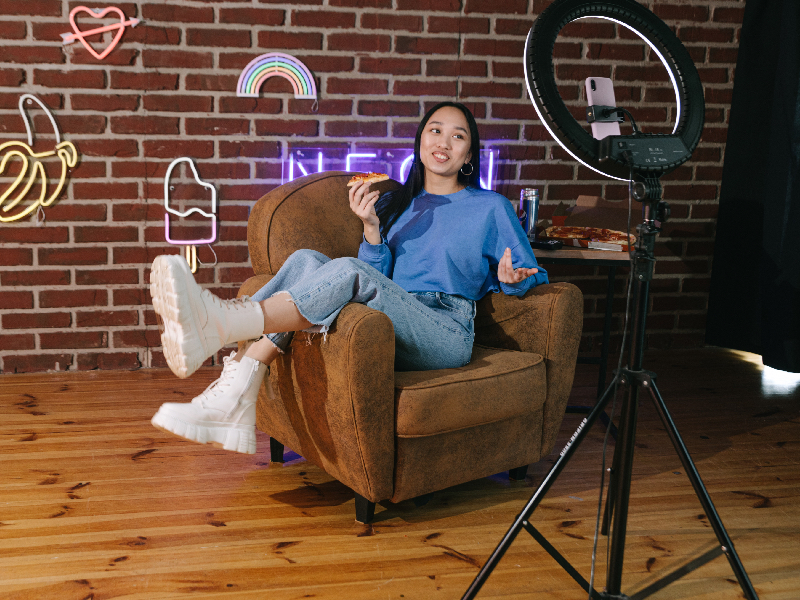Atalia Nyx Chua 23 Mar 2023 // 6:43AM GMT

Social media creators have been ‘deinfluencing’ audiences to not fall prey to hyped products and shopping frenzies promoted by influencer culture. As of Monday, 20 March, the hashtag #deinfluencing has been viewed a whopping 380m times on TikTok.
The bedrock of this trend is rising opposition to overconsumption. The ‘anti-hauling’ subculture, for example, involves influencers showing products they will not buy or repurchase. As of the same day, #antihaul has 62.7m views. The hashtag reflects the opposite of typical trends on the platform, where influencers often flaunt the excessive and expensive products they have bought.
With influencer marketing serving as a key driver for sales and brand uplift, marketers and PR practitioners may feel pressure to reshape consumer strategies. But few expect marketing and PR dollars to be reallocated away from influencer marketing. “Influencers are here to stay," says WE Communications Singapore MD Daryl Ho. In 2022, the influencer industry raked in US$16.4bn. On the shopping platform LTK alone, which is visited by more than 18m users monthly, influencers sold over $3.6bn worth of products in the same year.
Emily Poon, president of public relations & influence for Ogilvy Asia, also believes influencers have staying power as “influencer marketing has become integral in the communications mix for clients.”
“This also applies to organisational structures for in-house marketing and communications and agency teams, with newly created influence functions and roles,” she said.
According to ‘The State of Influencer Marketing 2023: Benchmark Report’, more than 75% of brands set aside budgets just to drive influencer marketing in 2022, with 82% of respondents stating their intentions to allocate budget this year.
But Ho said the profile of influencers engaged will shift. “Instead of money being (pumped into) traditional macro influencers, brands might start reallocating the money to micro-influencers instead. Micro-influencers are generally seen as more authentic and genuine since they have a smaller following,” he explained.
Poon added that presently, “client partners across industry sectors (will) shift a bigger portion of their marketing budgets away from traditional ATL activities towards funding bottom-up influencer initiatives.”
“Recently, we are seeing an increasing emphasis on grassroots influence tapping into niche interests and micro communities and influencing from the ‘ground up’.”
That is why, Poon continued, despite the deinfluencing trend being touted on TikTok now “influencer marketing will continue to evolve alongside new platforms and changing consumer behaviour.”
This changing behaviour may be motivated by shifting consumer expectations of brands and influencers. “Consumers are getting more sceptical and critical about their purchases, especially in the current recession climate,” said Ho. They expect more “transparency and advocacy” from brands.
Indeed, economic woes may have driven the deinfluencer trend as consumers search for affordable products which give them more bang for their buck. Jasmine Enberg, a social media analyst at Insider Intelligence, said: “The hype will die down as the economy improves. They’ve just adapted the trend to resonate with consumers during an economic downturn.”
Tighter pockets have also cultivated the #dupe culture taking over TikTok, where a cheaper product serves as an imitation of a more high end or luxury version. Mostly seen in fashion, this trend has also spilled over to beauty and electronics products.
On the #dupe hashtag, a majority of liked videos are by creators sharing cheaper alternatives to expensive goods. As of 20 March, the hashtag has been viewed a staggering 3.3bn times, more than eight times as much as #deinfluencing.
Another motivation reshaping consumer behaviour is a desire to take influencers to task if they sense inauthenticity, said Poon. “This deinfluencing trend is a timeless communications principle, which reinforces the need for creators and influencers to be honest and authentic with audiences, instead of a one-off trend.”
She advised brands to “take a longer-term view on engaging with influencers who prioritise relationships and trust with their communities and are genuine and credible in their reviews and move away from transactional influencer engagements that are purely sales and hype-focused.”
Meanwhile, Ho thinks the hype around #deinfluencing is overstated, and will not be long-lasting because consumerism is perpetual. "Trends are cyclical and another influencer trend will eventually topple the deinfluencer trend."
"In fact, most of the deinfluencers pushing for the trend are the same influencers who were actively participating in the #TikTokMadeMeBuyIt trend just months ago," he said.
Afterall, “deinfluencing is still influencing,” said Enberg. “Creators are using their power to sway the purchasing decisions of a broader population. Deinfluencing isn’t the remedy for overconsumption, nor is it the end of influencer marketing. TikTok creators will remain a major driver of commerce sales from social media, which (while slowing) will grow 29.8% in the US this year."



































.jpg)

















